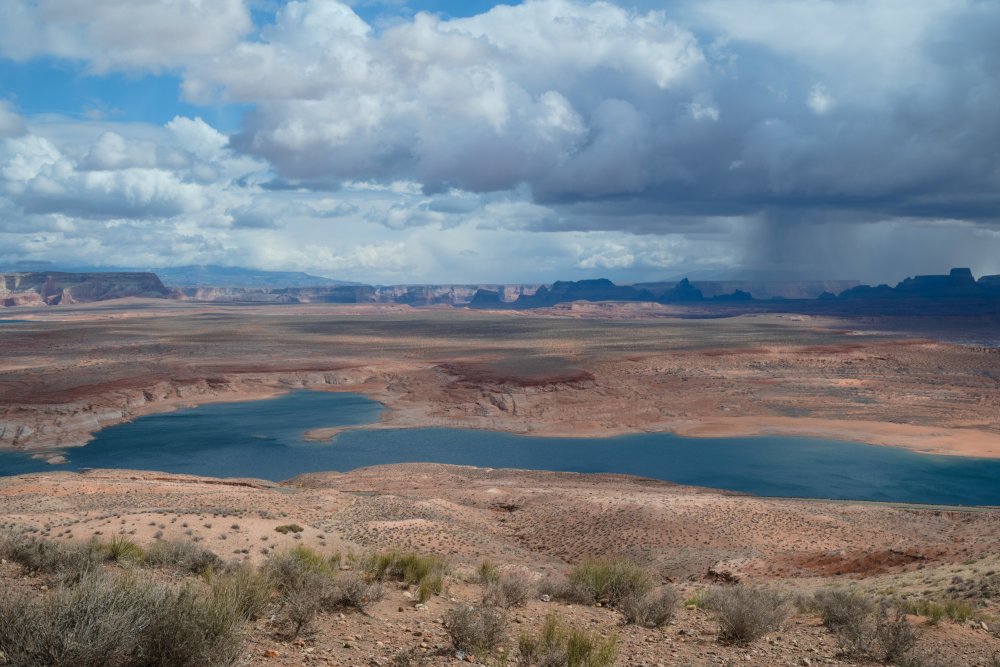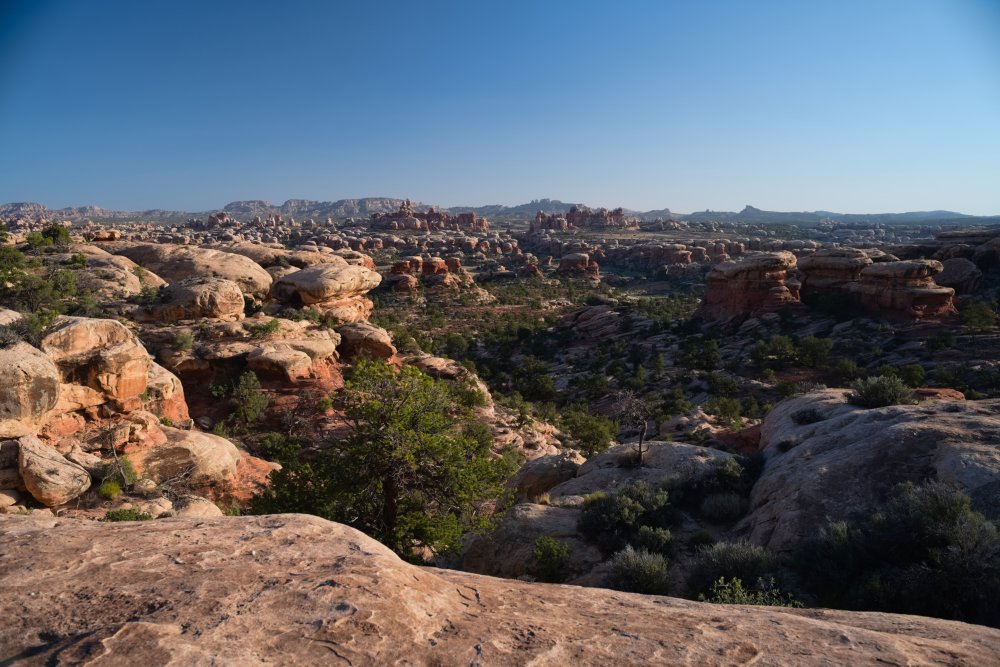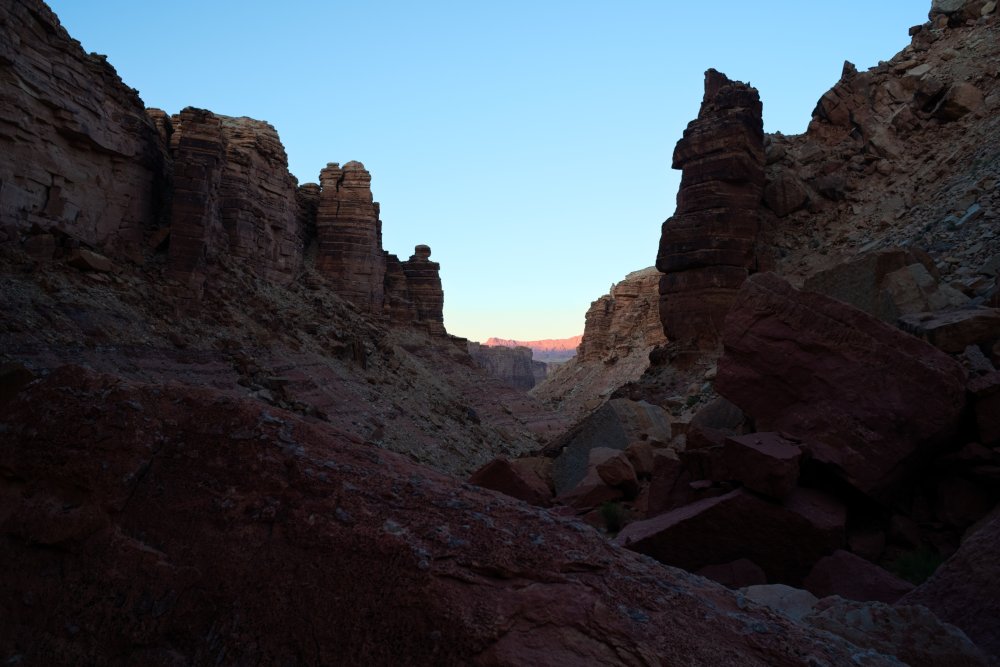
KnightsFan
Members-
Posts
1,353 -
Joined
-
Last visited
About KnightsFan

Profile Information
-
Gender
Not Telling
-
Location
USA
-
Interests
Cinematography, photography, sound design
-
My cameras and kit
S5
Contact Methods
-
Website URL
https://gobuildstuff.com/
Recent Profile Visitors
The recent visitors block is disabled and is not being shown to other users.
KnightsFan's Achievements

Long-time member (5/5)
900
Reputation
-
 maxJ4380 reacted to a post in a topic:
Share our work
maxJ4380 reacted to a post in a topic:
Share our work
-
 kye reacted to a post in a topic:
Share our work
kye reacted to a post in a topic:
Share our work
-
It's been a while since I've been able to work on any kind of movie, but here are some recent landscapes photos. I'm not doing anything artistic, just trying to capture some of my favorite places the way they felt at the time. The only edits are very slight changes to saturation and exposure. 90% of my photos are from 10+ mile hikes so I only bring my lightweight 28mm and a CPL, but in this group is a rare photo taken from the roadside using a 24-105.
-
 Davide DB reacted to a post in a topic:
Arri is the new Adobe
Davide DB reacted to a post in a topic:
Arri is the new Adobe
-
As much as subscription models suck for us individuals, they are often preferable for businesses, even regarding software like Adobe. Obviously Arri's target market is rental houses, and the comment earlier about a rental house passing those temporary upgrades to customers is quite likely the intent. It's worth spelling out the difference between subscription editing software and camera upgrades, though. With Adobe's product, if you stop paying, you can't open your old projects. In Arri's model, if you stop paying, you can presumably still open files shot with those upgrades. Losing access to the creative work that you've already done is a big difference.
-
 KnightsFan reacted to a post in a topic:
Arri is the new Adobe
KnightsFan reacted to a post in a topic:
Arri is the new Adobe
-
 KnightsFan reacted to a post in a topic:
Arri is the new Adobe
KnightsFan reacted to a post in a topic:
Arri is the new Adobe
-
 eatstoomuchjam reacted to a post in a topic:
Fav AI outcome out there...
eatstoomuchjam reacted to a post in a topic:
Fav AI outcome out there...
-
 eatstoomuchjam reacted to a post in a topic:
Fav AI outcome out there...
eatstoomuchjam reacted to a post in a topic:
Fav AI outcome out there...
-
There's a pretty big difference between one person stealing a screenplay or synopsis, and scraping the entire internet to make a generalized tool that billions of people use daily. Both can be unethical, but it's a few orders of magnitude difference in how many people it harms and to what degree. I believe that we should create technology for its own sake. I don't want to halt AI progress. There just needs to be a way to ensure that it benefits all people, particularly the people who (unwillingly/unknowingly) contributed to creating the models.
-
If you think that it is unethical to copy a commercial movie and personally sell those copies without the permission of the movie's owner, then it's hard to imagine how it could be ethical to use that same movie to train a model that is then sold without the permission of that movie's owner.
-
At no point in my life could I remotely imagine making a mess for someone else to clean up. I almost don't care about people making some noise in the theater at that specific moment--hey, it's not my type of movie, let the fans enjoy it their way--but people throwing shit on the floor makes me so angry. I think pop culture has shifted sharply towards factual, literal interpretations of stories. Our stories have become more about whether superhero A or superhero B would win in a fight, and less about what that conflict tells us about the characters, or more importantly, ourselves. Characters and stories are analyzed in terms of today's culture, rather than the movie world. It's in vogue to say, "well actually, don't date a guy like Mr. Darcy, because he only helped Lydia to get in Elizabeth's pants" ignoring that it's fantasy. Stories don't necessarily need the same ideology or moral code as real life--fantasy isn't only about a physical setting. The emotional meaning behind an action in a story doesn't necessarily match the emotional meaning behind that same action in the real world. And I think that 20-40 years ago, moviegoers accepted that kind of fantasy to a larger degree. It was normal for a movie to convey themes and values without requiring a literal relationship to modern-day themes and culture. Maybe another way to summarize is that subtext--both in terms of plot and theme--has become less common.
-
I don't know about that. Negativity is a whole industry that certainly draws in the views. Maybe not cammacky's style, I'm not familiar with him (I think I at least know who he is?), but a video critiquing every little thing about a product would definitely generate views. Gerald got a whole lot of buzz and an entire separate video's worth of views by saying rolling shutter was bad. There are plenty of channels that revolve entirely around saying how bad everything is.
-
I'm sure if someone made twice the camera for the same price as the S1II, he'd be all over it! I take it more to mean that he's content focusing on what he has instead of what he doesn't have, which I can respect.
-
Yeah, I'm just saying it's shape heavily favors photography, while the marketing and naming imply mostly video (and yes I think the same of the FX3 and 30). Sony's product page doesn't mention photos until near the bottom, and even then, it highlights that you can shoot photos in s-log3 to match your videos. Not that it matters. Like saying Blackmagic Pocket cameras don't fit in pockets. It seems like a great product.
-
I don't hate it. I'm not sure how I feel about the EVF. Can it be locked? I feel like it will move when I press it against my face. I refuse to call it a cinema or video camera though. This form factor sucks for video. But as a primarily photo hybrid, yeah, it looks like a decent value. I'd rather pay extra for an S1II, to be honest, if I was going to buy a brand new camera.
-
As someone who exclusively buys used, I agree with you-- however, features in new products are almost never objectively worth the premium, in any product category. Cameras, cars, graphics cards, clothes, music albums, and even digital video games on steam, if enjoyment is the value metric.
-
 John Matthews reacted to a post in a topic:
New L-Mount Lumix (cinema?) Camera
John Matthews reacted to a post in a topic:
New L-Mount Lumix (cinema?) Camera
-
There's no chance I'll get one, but I don't think the S1II is that bad. Price is too high, but as I said a few pages ago, tariff disruptions drive all prices up. I'm curious whether the S1IIE uses the sensor from the S1 or from the S1II. It's quite a bit cheaper. Newsshooter says "partially stacked" for the S1IIE, and it has 4k120, so I wonder if it's got the faster readout of the S1II. If so, that's a decent discount for losing 5.1k60, raw, and DR boost, non of which I really care about, while (maybe?) keeping the features I like: faster readout, full size HDMI, 32 bit XLR adapter, and non-jangly neck trap loops.
-
 eatstoomuchjam reacted to a post in a topic:
New L-Mount Lumix (cinema?) Camera
eatstoomuchjam reacted to a post in a topic:
New L-Mount Lumix (cinema?) Camera
-
The leaked price (if correct) might reflect tariffs and that uncertainty, in which case other manufacturers might raise prices on both new announcements and existing products. Value comparisons this year might not be as useful as usual.
-
 eatstoomuchjam reacted to a post in a topic:
Our "ally" in the USA just bazooka'd the UK film industry
eatstoomuchjam reacted to a post in a topic:
Our "ally" in the USA just bazooka'd the UK film industry
-
Our "ally" in the USA just bazooka'd the UK film industry
KnightsFan replied to Andrew Reid's topic in Cameras
Do you think it applies to ad revenue collected from YouTube videos shot in another country? What about ad revenue from ads shot in other countries? Does Google pay the tariff on their ads, or does the advertiser pay it when they sell a product? Do you think it's about what is in the shot, or camera placement? Ie if I stand on the US side and film something across the border, is it a US shot or not? What if I place a giant mirror across the border and film it, giving the exact perspective of the camera being placed on the other side? Well Canada is the 51st state, so no tax. Obviously. -
 Thpriest reacted to a post in a topic:
New US camera import tariffs - 25-50%
Thpriest reacted to a post in a topic:
New US camera import tariffs - 25-50%
-
I wrote a similar post earlier, maybe in this thread, but a hurdle to overcome in the US is that a significant portion of our population believes that the more credentials a person has, the less trustworthy they are. This includes professors, reporters, researchers, and other experts. It applies especially to those in academia or have higher education. If the head of the IRS with 20 years of experience says that more auditors leads to more revenue, and explains how auditors find discrepancies and why it takes time, and shows historical data to back it up, many Americans will automatically believe the opposite. If an anonymous dude in a Dinesh D'Souza doc says that a person he can't identify dumped 20 extra ballots in a mailbox, it's believed--not in spite of lack of rationality, but because of it. This isn't without analogy in the rest of the world. In some way, it's a logical extreme of believing that "street smarts" is better than "book smarts," which is commonly believed in many places, and is true in some situations. However, many Americans are aggressively uneducated, and ideologically see education itself as wrong. ("Education" here means a thought process that uses data and logic to draw conclusions, not knowledge of specific trivia). Personal truths, often derived from religion and specific personalities/influencers, are held to be truer than empiricism, the scientific method, and data, while any appeal to rationality is rejected as part of the deep state conspiracy that every academic is part of. Once a person intentionally rejects objectivity and rationality, their actions cannot be explained as being out of personal interest. They often actively vote against their personal interest, because their worldview rejects data and analysis. And, to be clear, there are still rational people here, including many Republicans and conservatives. But we've reached a critical mass of the voting public that we now have elected officials at every level, from local to president, who also reject rationality.
-
 Juank reacted to a post in a topic:
Blackmagic NAB 2025 Preview - 4th April 2025 4pm BST
Juank reacted to a post in a topic:
Blackmagic NAB 2025 Preview - 4th April 2025 4pm BST
-
Stock market had a massive surge after most of the tariffs were paused. Imagine how much money you could make if you knew that would happen 30 minutes before it did. It's generally fascinating how much wealth is created or destroyed with no change in goods or services produced.




